Medical expert of the article
New publications
Porridge for children
Last reviewed: 04.07.2025

All iLive content is medically reviewed or fact checked to ensure as much factual accuracy as possible.
We have strict sourcing guidelines and only link to reputable media sites, academic research institutions and, whenever possible, medically peer reviewed studies. Note that the numbers in parentheses ([1], [2], etc.) are clickable links to these studies.
If you feel that any of our content is inaccurate, out-of-date, or otherwise questionable, please select it and press Ctrl + Enter.
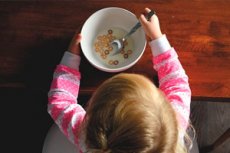
Porridges for children are an important part of a healthy diet, as grain products are a source of plant proteins, carbohydrates, minerals and various vitamins.
The introduction of new products into the children's menu begins at an early age (from 5-6 months), especially recommended is nutrition in the form of boiled and crushed cereals for babies who are not gaining weight well.
You should start with cereals that do not contain gluten, so as not to provoke allergies and disruption of the digestive system.
Corn, rice and buckwheat do not contain gluten, and it is recommended to start introducing your baby to adult food with them.
What kind of porridge should I give my child?
Today, every mother can choose for herself whether to buy her child a ready-made instant product or prepare a tasty and healthy lunch at home.
Ready-made porridges for children are prepared quickly, additionally enriched with vitamins and microelements necessary for the full development of the baby, in addition, such ready-made mixtures for baby food have a uniform consistency, and the baby swallows such food more easily.
But store-bought mixtures are quite expensive, and some manufacturers use various food additives (starch, sugar, etc.), which are harmful to the unformed digestive organs; such food is especially unsuitable for the first feeding.
Before purchasing a ready-made soluble product, you should carefully read the composition; dairy-free mixtures that do not contain gluten, sugar, or salt are suitable for your baby.
When preparing at home, you should follow some simple rules that will allow you to preserve the nutritional properties as much as possible:
- The grains must be ground before the cooking process
- bran, millet, boiled polished rice are contraindicated for young children
- Baby food should be prepared in water, adding breast milk, baby formula, sugar, butter, etc. only after it is ready.
- It is advisable to cook in proportions of 1:3 (but everything depends on the individual preferences of the little picky eater).
Benefits of porridge for children
Cereals have long been one of the first dishes with which small children are introduced to complementary feeding. Cereals have gained such popularity primarily due to their benefits for both children and adults.
Nowadays, cereals for children are produced taking into account age, with the addition of various vitamins and minerals, as well as fruits or vegetables. However, almost any cereal itself has enormous benefits for the body, which was known several centuries ago.
Cereals improve bowel function, promote digestion, and provide energy, which is very important for a growing baby. Some cereals can help with digestive disorders, for example, rice helps with diarrhea, and buckwheat, oatmeal, and barley help with constipation.
How to cook porridge for a child?
To prepare porridge for children, you must first prepare all the necessary products, the cereal should not contain small debris, husks and other contaminants, if necessary, you need to thoroughly clean it, rinse it well under running water. If you plan to add fruits or vegetables, they also need to be thoroughly washed.
For cooking, use a thick-bottomed pan to avoid burning. Pour the prepared cereal into the pan (for babies under one year, the cereal can be pre-ground with a blender or coffee grinder), add the required amount of water (for 3-4 tablespoons of cereal, 250-300 ml of water or milk) and cook over low heat until done. At the end, you can add sugar, butter, vegetables or fruit (puree).
Porridge recipes for children
Porridge for children will not only be healthy, but also tasty if you cook it correctly and add fruits, sugar, butter, etc. to improve the taste.
There are many recipes for this healthy dish, among which the most successful ones can be highlighted:
- Rice porridge with apple: 3 tbsp. rice, 250 ml water, apple, sugar to taste.
Pour cold water over the rice, add peeled and cut into pieces apple, put on the fire and cook on low heat for 15 minutes, after cooking add oil (for a softer consistency you can beat it with a blender).
- Oatmeal with banana: 3 tbsp. oatmeal, 250 ml milk (or water), half a banana, salt, sugar.
Pour sugar, salt and oatmeal into boiling milk, cook on low heat for about half an hour. Cool slightly and add small pieces of banana, beat with a blender if desired.
- Milk corn porridge: 3 tbsp. cereal, 100 ml milk, 250 ml water.
Place corn in cold water, simmer for about 20 minutes over low heat, then pour in milk, bring to a boil and simmer for another 5-10 minutes, add butter and banana pieces when done.
- Millet porridge with pumpkin: 0.5 cup cereal, 250 ml milk, 1 cup finely chopped pumpkin, butter, salt, sugar.
Pour water over the millet (the liquid should be about 2 cm above the level of the cereal), and cook over low heat for 15 minutes.
Pour milk over the pumpkin and cook until soft, then mash into a puree and add to the finished millet. Add salt, sugar, and butter to taste (if it's too thick, you can add a little hot milk and cook for a few minutes).
Semolina porridge
Semolina has an exceptional chemical composition and has a beneficial effect on digestion at any age.
It contains a large amount of vitamin E, B3 and B9, phosphorus, potassium, which play an important role in the development of the baby.
It is also worth noting that during cooking, semolina retains all its beneficial properties.
Experts recommend such nutrition for babies with irreversible kidney dysfunction, since semolina is considered an ideal option for babies with such a pathology due to the lack of protein in it. In addition, semolina contains a small amount of fiber and is well suited for nutrition in cases of exhaustion.
Semolina has long been used to feed babies, including children under one year old. But in recent studies, experts have found that semolina interferes with the absorption of vitamin D, iron and calcium due to the phytin it contains. Also, gluten, which is part of semolina, can provoke severe allergic reactions, so experts recommend gluten-free cereals for children (buckwheat, rice, corn), and limit semolina to 2-3 times a week.
Buckwheat porridge
Experts agree that buckwheat ranks first in nutritional properties for a growing organism. It is extremely useful for small children – it does not contain gluten, is easily digestible and has a high nutritional value (contains vitamins B, PP, E, flavonoids, microelements). In addition, buckwheat contains a large amount of iron, so with a reduced hemoglobin level, it must be included in the child's diet.
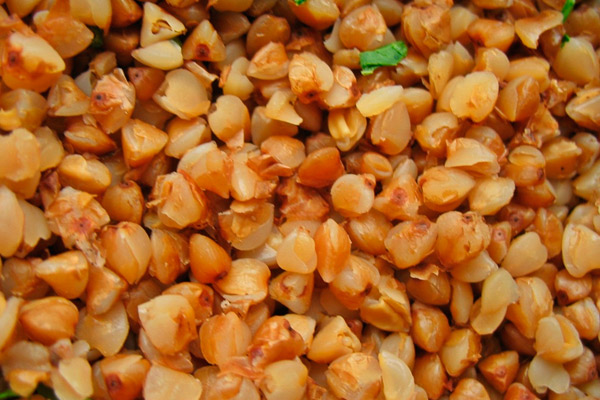
Buckwheat can be safely used for feeding babies. Ready-to-eat buckwheat mixtures (store-bought) are recommended from 5 months of age, after the baby gets used to such food, you can cook it yourself from chopped buckwheat (at about 7-8 months). After a year, the baby can already be given well-boiled whole grain buckwheat.
Corn porridge
Corn improves digestion, stimulates intestinal peristalsis, helps to cope with constipation, and helps to reduce fermentation and putrefaction processes in the intestines.
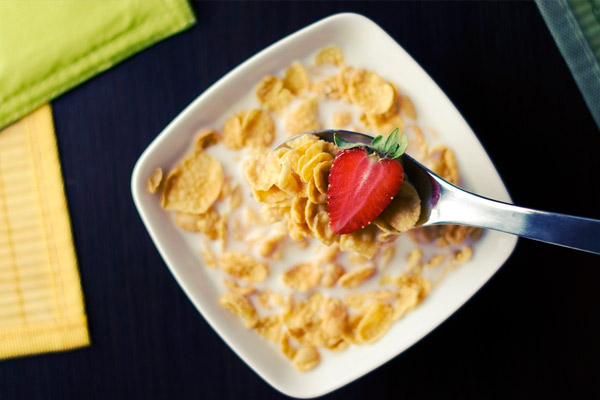
Corn is enriched with vitamins and minerals that help strengthen the immune system, improve the functioning of the cardiovascular system, and strengthen bone tissue (experts recommend this diet for dental problems).
 [ 3 ]
[ 3 ]
Rice porridge
Rice provides a large supply of energy necessary for a growing child's body. It has a pleasant taste and most children enjoy eating rice with vegetables or meat puree, as well as sweet rice with added fruits or berry syrup.
Rice porridge can be given from six months, as this cereal does not contain gluten and is easily digestible.
Rice does not irritate the intestinal mucosa due to the starchy-mucous components, they gently envelop the stomach and protect it from various irritants.
Rice is also enriched with vitamins, minerals, amino acids, and is a source of proteins and carbohydrates, but it is worth remembering that rice has astringent properties, so if you are prone to constipation, it is better not to abuse such a diet.
Milk porridges
Milk porridges are considered one of the most important dishes of the daily diet. They begin to introduce such dishes after vegetable puree, at about 5-6 months. Cereals with milk are useful not only for babies, but also for schoolchildren, because they help the child grow and develop properly.
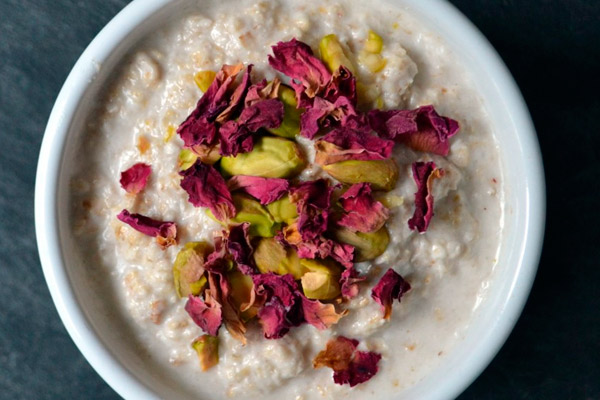
Oatmeal
For babies, oatmeal porridge is considered the most useful of all cereals. Oatmeal contains fiber, vitamins, minerals, amino acids, it improves the functioning of the digestive organs, helps with constipation.
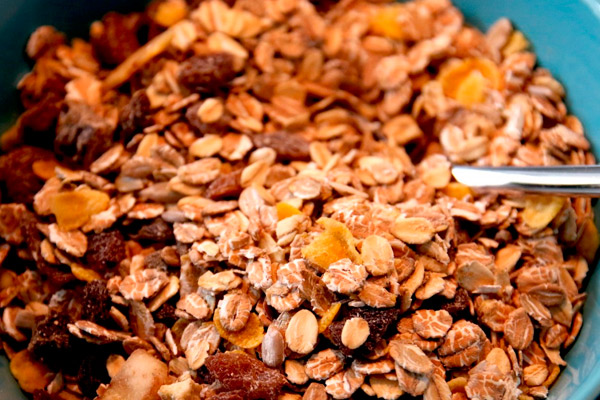
The maximum nutritional value is contained in whole grains of oats. Oat flakes undergo processing, during which some valuable substances are destroyed.
The advantage of flakes is mainly in the speed of their preparation (from 5 to 25 minutes), but when choosing a product, preference should be given to those flakes that need to be cooked for at least 20 minutes.
Millet porridge
The bright yellow millet has the greatest benefit. But it is worth remembering that it contains a large amount of fats, which quickly oxidize, so the longer the millet is stored, the less useful it is.
Millet has unique properties: it improves the functioning of the hematopoietic system, heart, blood vessels, liver, and cleanses the body of toxins and antibiotics.
Polished millet contains vitamins B, A, E, a large number of microelements (calcium, phosphorus, iron, zinc, iodine, fluorine, etc.).
It is not recommended to give whole grains to babies under one year old, since the immature digestive system is not able to digest such food, but millet ground into flour will undoubtedly be useful.
It is recommended to give millet porridge several times a week, always alternating with other cereals (buckwheat, rice, wheat, etc.).
Wheat porridge
Wheat, like other cereals for children, is the main source of fiber, which improves the functioning of the digestive system and prevents the development of gastrointestinal diseases.
Wheat is often served in kindergartens and to young school-age children, and is also part of the hospital menu.
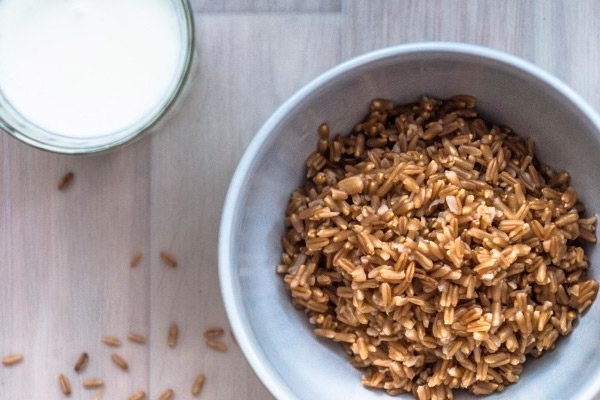
Wheat groats are rich in microelements (calcium, potassium, phosphorus, iron, etc.), vitamins (PP, A, E, B12, B6, etc.), and have high nutritional value.
Another advantage of wheat is its ability to reduce muscle fatigue after intense exercise, due to the biotin it contains.
Experts recommend that after serious illnesses you include wheat groats boiled in milk in your diet, which will help you recover faster.
Oatmeal porridge
Rolled oats are oat flakes, and the benefits of this food are associated with the nutrients contained in oats.
First of all, such a diet is good for bones and teeth, because 100 g of rolled oats contain a third of the daily dose of phosphorus, which helps to absorb calcium.
Oats also contain B vitamins, which have a positive effect on the heart and nervous system, as well as vitamins PP, A, E, F and minerals (iron, potassium, magnesium, etc.).
The main advantage of rolled oats is that the flakes retain part of the shell and germ, which are known to contain the maximum amount of nutrients.
It is recommended to give porridge with oatmeal from six months, oats have an antioxidant effect, remove toxins from the body, improve the metabolism of amino acids, proteins, cholesterol, in addition, such a diet is recommended for children with a tendency to allergies.
Barley porridge
Yachka is made from barley, a unique source of useful minerals and vitamins. Barley porridge is useful, first of all, because it strengthens bones and teeth, since barley contains a large amount of phosphorus, which is necessary for the normal absorption of calcium. Also, barley improves digestion, removes harmful substances,
It is also worth noting that barley strengthens the body's defenses, helps resist viruses, has a mild diuretic effect and reduces muscle spasms.
 [ 4 ]
[ 4 ]
Pumpkin porridge
Pumpkin pulp contains a large amount of vitamins, microelements, proteins, and fiber. Alkalizing substances contained in pumpkin improve the condition with increased acidity. In addition, pumpkin is indicated for kidney or heart dysfunction.
Porridges with pumpkin are recommended for breakfast and dinner, they are easily digestible and provide energy for a long time, in addition, they do not cause a feeling of heaviness in the tummy.
You can cook pumpkin with rice or millet (you can also combine the two types of cereals); to improve the taste, you can add grated apple, raisins, and sugar.
Porridge with vegetables
Vegetable porridge is a natural remedy for preventing constipation. In addition, the growing body receives a double portion of vitamins, microelements, and fiber.
It is worth noting that for a child you need to choose seasonal vegetables, or those that can be stored for a long time in the winter (carrots, cabbage, etc.).
New types of vegetables are introduced into the diet gradually, in small portions; if any undesirable reactions occur, the new type of product should be immediately excluded.
Night porridge for a child
Porridge at night is usually recommended by specialists to wean the baby from waking up at night for "snacks". As a rule, the pediatrician recommends making the last feeding more filling so that the baby sleeps peacefully all night and does not feel hungry.
There are special ready-made products that, according to manufacturers, have a calming effect and help you fall asleep (usually manufacturers add linden or chamomile extracts).
Gluten free porridge
Gluten-free cereals are usually used as the first complementary food. Gluten has the property of causing severe allergic reactions, so it is better to give gluten-free products to babies with an imperfect digestive system.
Corn, rice and buckwheat do not contain gluten.
When consuming gluten-containing products, the villi in the intestines begin to stick together, as a result of which the digestion process is disrupted, the body begins to "starve" due to a lack of nutrients. Such conditions are extremely dangerous for the baby, so gluten-free cereals are considered an ideal option for the first complementary feeding. Over time, when the baby's digestive system can normally digest gluten, other cereals can be included in the diet, but experts recommend eating them no more than 2-3 times a week.
It is not worth completely giving up gluten-containing products; according to some data, the absence of gluten in the diet leads to a lack of vitamins B, D, calcium and iron.
Porridge in a multicooker
A multicooker allows you to preserve the maximum amount of vitamins and microelements during the heat treatment process, since all the moisture in the products remains inside. In addition, a minimum amount of oil is required for cooking, and in some recipes it is not required at all, but this does not spoil the taste of the dish.
It is worth noting that modern models of multicookers have a built-in timer that starts the cooking mode at a certain time, as a result, a tasty and healthy breakfast will be ready by the time the baby wakes up with minimal effort.
Depending on individual preferences, you can get a mixture of any consistency; as a rule, you can adjust the thickness by adding or reducing the amount of water, but in each case you should search for “your ideal recipe” by trial and error.
To prepare porridge for children in a multicooker, you need to choose a regular type of cereal, not quick-cooking ones, which have recently become increasingly popular.
Rice porridge in a multicooker: 300 ml of water (can be diluted with milk), unpolished rice – 30 g, butter 5 g, salt, sugar to taste.
Rinse the rice well under running water, grease the bottom of the multicooker bowl with oil and put the rice in it, fill it with water, add salt, add fructose syrup if desired, set the “Milk mixture” program for 30 minutes (in some models, the time for certain programs is set automatically).
Once ready, you can beat it with a blender or rub it through a sieve.
Dairy-free cereal recipes for children
Dairy-free cereals for children are less caloric, but they contain no less nutrients and vitamins. This diet is especially suitable for babies with lactose intolerance (a carbohydrate found in all dairy products).
- Corn porridge: water – 250 ml, corn grits – 2 tbsp, salt, butter.
Rinse the corn well, add water and bring to a boil, reduce heat and cook until done (approx. 25-40 minutes). Once done, you can grind it in a blender, then heat it in a saucepan until boiling and season with butter.
- Steamed rice porridge: 10-15g of steamed rice (can be ground in a coffee grinder beforehand), 40-60ml of water, apple, butter.
Pour water over the crushed rice (1:4) and steam it in a steam bath for 20 minutes (you can use a steamer). 10-15 minutes before the end of cooking, add chopped apple, sugar to taste.
- Semolina porridge with pumpkin: 100g grated pumpkin, 250ml water, 2 tbsp semolina.
Bring the water to a boil, add the grated pumpkin, cook for about five minutes and gradually add the semolina, stirring constantly, until ready (if the consistency is too thick, you can pour in a little water and boil for a few minutes).
Allergenic cereals for children
Allergy to cereals can occur due to gluten, which is part of many cereals (rye, barley, wheat, oats). Gluten gives the cereals stickiness, thanks to it flour turns into dough, and after cooking the cereal becomes viscous.
But if you are prone to allergies, gluten can cause extremely undesirable reactions.
Porridges for children made from such cereals as rye, oats and barley are considered especially “dangerous”, but the most allergenic is wheat, from which the well-known semolina is made.
Rice, buckwheat, and corn have minimal allergenic properties. But in rare cases, an allergy to buckwheat may develop, primarily due to the animal protein that is found in large quantities in buckwheat.
What to do if a child does not eat porridge?
Porridges for children are very healthy, but, unfortunately, not all children like to eat them. Refusal of the offered dish can occur if the baby does not like the taste or consistency.
If the baby refuses to eat the formula, you can put pieces of fruit, berries, honey or jam in them (if there is no allergy).
Most babies don't like porridge that is too thick, so you can add more water during cooking to get a thinner consistency in the end, or use a blender if you wish.
Some mothers resort to trickery and say that there is a candy (cookie, apple or other favorite treat of the baby) at the bottom of the plate, but to get it, you will have to eat everything that is on the plate. You can also make a picture out of jam, for example, draw the sun, a car or a kitten.
If no tricks help, and your child continues to refuse formula, you can prepare other dishes from cereals, such as meatballs, pies, casseroles, etc.
Porridges for children have undoubted benefits. The growing baby receives most of the necessary nutrients and vitamins from just one serving of porridge. It is recommended to introduce cereals into the children's menu from about six months and it is best if they become an integral part of the child's diet, right up to senior school age.

